
Бази даних
Наукова періодика України - результати пошуку
 |
Для швидкої роботи та реалізації всіх функціональних можливостей пошукової системи використовуйте браузер "Mozilla Firefox" |
|
|
Повнотекстовий пошук
| Знайдено в інших БД: | Реферативна база даних (6) |
Список видань за алфавітом назв: Авторський покажчик Покажчик назв публікацій  |
Пошуковий запит: (<.>A=Marusenkova T$<.>) | |||
|
Загальна кількість знайдених документів : 10 Представлено документи з 1 до 10 |
|||
| 1. | 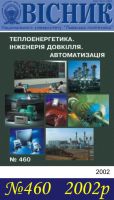
Marusenkova T. Analytic solution for the problem of in-situ calibrating magnetometric 3D-probes based on non-orthogonally placed hall devices [Електронний ресурс] / T. Marusenkova // Вісник Національного університету "Львівська політехніка". Комп’ютерні науки та інформаційні технології. - 2014. - № 800. - С. 154-159. - Режим доступу: http://nbuv.gov.ua/UJRN/VNULPKNIT_2014_800_23 Запропоновано методику in situ калібрування 3D-зонтів магнітного поля з лінійними вихідними характеристиками давачів за відомих параметрів кутового розсуміщення їх площин з гранями підкладки зонта. Одержано аналітичні вирази для розрахунку лінійних коефіцієнтів. Експериментально підтверджено ефективність запропонованої методики. | ||
| 2. | 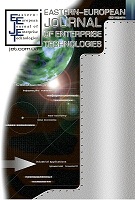
Marusenkova T. Developing an algorithm with improved relevance for the localization of vector’s coordinates for intelligent sensors [Електронний ресурс] / T. Marusenkova // Восточно-Европейский журнал передовых технологий. - 2016. - № 6(4). - С. 36-44. - Режим доступу: http://nbuv.gov.ua/UJRN/Vejpte_2016_6(4)__5 | ||
| 3. | 
Marusenkova T. An algorithm checking the uniqueness of quadrics’intersection point for vector quantities smart sensors [Електронний ресурс] / T. Marusenkova, I. Yurchak // Вісник Національного університету "Львівська політехніка". Комп’ютерні системи проектування. Теорія і практика. - 2016. - № 859. - С. 45-50. - Режим доступу: http://nbuv.gov.ua/UJRN/VNULPKSP_2016_859_9 Розглянуто проблематику використання сенсорів векторних величин, польові характеристики яких є функціями, що описують квадрики. Координати вектора вимірюваної величини визначаються як точки перетину квадрик. Таких точок може бути декілька, що ставить під сумнів придатність результатів вимірювання. Запропоновано алгоритм визначення єдиності розв'язку системи трьох рівнянь квадрик. Реалізацію алгоритму можна використати у мікропрограмному забезпеченні інтелектуальних сенсорів векторних величин. | ||
| 4. | 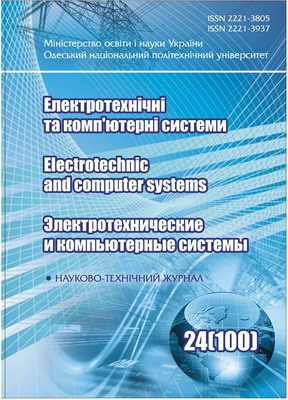
Marusenkova T. A. A rapid analysis of hardware-software tools for exploring inertial measurement units based on normality tests [Електронний ресурс] / T. A. Marusenkova // Електротехнічні та комп’ютерні системи. - 2019. - № 30. - С. 83-92. - Режим доступу: http://nbuv.gov.ua/UJRN/etks_2019_30_12 | ||
| 5. | 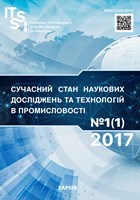
Holyaka R. Signal model for spatial position sensors in magnetic tracking systems [Електронний ресурс] / R. Holyaka, T. Marusenkova, D. Fedasyuk // Сучасний стан наукових досліджень та технологій в промисловості. - 2020. - № 1. - С. 5-18. - Режим доступу: http://nbuv.gov.ua/UJRN/dtssi_2020_1_3 | ||
| 6. | 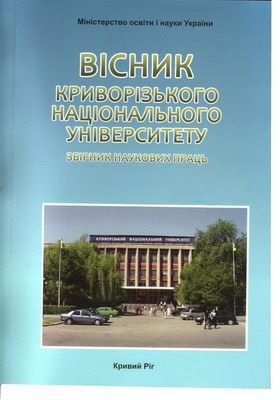
Marusenkova T. A gating algorithm with reduced computational complexity for linear Kalman filters in embedded systems [Електронний ресурс] / T. Marusenkova // Вісник Криворізького національного університету. - 2020. - Вип. 50. - С. 25-31. - Режим доступу: http://nbuv.gov.ua/UJRN/Vktu_2020_50_7 Kalman-based filters are the most commonly used algorithms of processing noisy signals from real sensors in different application areas. However, they have no intrinsic means of fighting off outliers, which can deteriorate filter accuracy drastically. Existing outlier rejection and accommodation techniques are computationally expensive for embedded systems. Our goal is to develop a multiple-step gating procedure suitable for implementation in firmware. Primarily the work is based upon statistical and probabilistic methods. For deduction, representation and corroboration of principal ideas it utilizes also linear algebra and analytic geometry. Verification of the developed algorithm has been performed using simulation techniques including the Monte-Carlo method. Scientific novelty. A new gating algorithm has been developed, verified and presented in detail. In contrast to the wellknown combination of the rectangular and elliptic gates, the proposed algorithm assumes an additional step which allows rejection of points not lying between the tangents of tilted confidence ellipses parallel to their major axes. The step helps avoid computing inverse covariance matrices required by the Mahalanobis distance due to the fact that it recognizes most outliers that are able to pass the rectangular gate, which makes invocation of the elliptic gate redundant. The proposed algorithm has been implemented and verified both theoretically and practically upon a variety of the multivariate linear Kalman filters and normally distributed random numbers for simulating outliers. Implementation has been done using the stm32f407vg microcontroller by STMicroelectronics. Simulation results have corroborated that the proposed interim step between application of the rectangular and elliptic gates reduces computational complexity of the whole gating procedure without any losses in accuracy. Results: the developed algorithm is integrated into a complex hardware-software tool intended for verification, estimation and investigation into micro-electromechanical inertial sensors. | ||
| 7. | 
Marusenkova T. A. An algorithm for detecting the minimum allowable accelerometer sample rate for tracing translational motion along a Bezier curve [Електронний ресурс] / T. A. Marusenkova // Технічна інженерія. - 2020. - № 1. - С. 147-154. - Режим доступу: http://nbuv.gov.ua/UJRN/tehin_2020_1_23 | ||
| 8. | 
Marusenkova T. A. A precise quaternion-based navigation algorithm for simulating signals of accelerometers and gyroscopes with low sample frequencies [Електронний ресурс] / T. A. Marusenkova // Технічна інженерія. - 2020. - № 2. - С. 86-94. - Режим доступу: http://nbuv.gov.ua/UJRN/tehin_2020_2_15 | ||
| 9. | 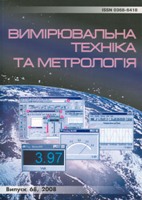
Holyaka R. Measuring logarithmic signal converter for magnetic tracking systems [Електронний ресурс] / R. Holyaka, T. Marusenkova, D. Fedasyuk // Measuring equipment and metrology. - 2020. - Vol. 81, № 1. - С. 16-21. - Режим доступу: http://nbuv.gov.ua/UJRN/metrolog_2020_81_1_5 The work deals with the problem of signal conversion in magnetic tracking systems. Magnetic tracking systems are a novel development trend of navigation sensors within the concepts of the Internet of Things and virtual and augmented reality. In contrast to optical tracking systems, magnetic ones do not suffer from occlusions. In comparison with tracking systems built upon inertial sensors, they are not susceptible to bias drift and provide better accuracy. Magnetic tracking technology is based on calculating the position of objects upon the dynamic measurement of the reference magnetic field vectors. The reference magnetic fields are formed by arrays of actuator coils in the low-frequency electromagnetic radiation spectrum. Those who implement a magnetic tracking system have to ensure noise-immune measurements of signals coming from sensor coils in a wide dynamic measurement range. The range changes from microvolts for distances of several meters in couples "actuator-sensor" to hundreds of millivolts in the case if the distances in "actuator-sensor" couples reduce to several centimeters. Thus, one requires signal converters able to provide highly noise-immune measurements in a dynamic measurement range covering six orders of magnitude. The work presents the results of development, simulation, and investigation into a signal converter for magnetic tracking systems, whose novelty consists in combining the methods of logarithmic amplification and synchronous demodulation of the output signals of the sensor coils. The main nodes of the developed signal converter are a control unit, a logarithmic amplifier, a synchronous demodulator, a low-pass filter, an actuator driver and an analog-to-digital converter. Voltage logarithm compression has been performed upon volt-ampere characteristics of semiconductor p - n junctions. The synchronous demodulator provides a high level of selection of the useful signal out of electromagnetic noise. The results presented in this paper are part of our complex research work related to the development of the Magnetic Tracking System Integrated Development Environment (MTS-IDE). The latter is being developed by a team of scholars within different projects and is aimed at enhancing the efficacy of parametric optimization and synthesizing firmware of embedded systems implementing integrated magnetic tracking sensors. Simulation and experiments have shown that the dynamic range of noise-immune signal measurement using the developed converter covers six orders of magnitude, from 1E-6 V to 1 V. Investigation into functionality were conducted by oscillograph methods. The characteristics of the proposed solution were measured by the above-mentioned MTS-IDE. The obtained results are of key importance for further improvement of magnetic tracking systems, particularly, for their noise-immune measurement volume expansion. | ||
| 10. | 
Barylo G. Hardware-software embedded system of signal frequency selection on gyrator [Електронний ресурс] / G. Barylo, I. Helzhynskyy, T. Marusenkova, Y. Kryvenchuk, M. Khilchuk, R. Holyaka, O. Boyko // Вимірювальна техніка та метрологія. - 2021. - Т. 82, Вип. 1. - С. 37-42. - Режим доступу: http://nbuv.gov.ua/UJRN/metrolog_2021_82_1_9 The work is devoted to the problem of frequency-selective signal conversion in microelectronic sensor devices. It has been shown that the signal path of such devices, in particular, sensor nodes in the concept of the Internet of Things, must meet the requirements of embedded systems using a mixed analog-digital front end. The analysis of the signal transformation of photovoltaic sensors, in particular the problem of a significant parasitic influence of extraneous non-informative optical radiation and electromagnetic interference, has been carried out. SPICE models of photovoltaic sensor signal circuits providing frequency selection on bandwidth filters have been synthesized. The main approaches of hardware-software implementation of the built-in system of frequency selection with the mixed-signal transformation are considered. The signal path of the embedded system includes a gyrator, a software-controlled amplifier, a synchronous demodulator, an analog-to-digital converter, and a digital filter. The implementation is carried out on the platform of the programmable system on a PSoC chip. The integrated circuits of the PSoC 5 LP Family Cypress Semiconductor Corporation are used with a wide range of programmable analog front-end nodes, in particular operating amplifiers, comparators, units on switching capacitors, reference voltage sources on the principle of the forbidden zone, analog multiplexers, signal synthesizers, etc. The efficiency of the mixed analog and digital signal conversion is shown. | ||
 |
| Відділ наукової організації електронних інформаційних ресурсів |
 Пам`ятка користувача Пам`ятка користувача |